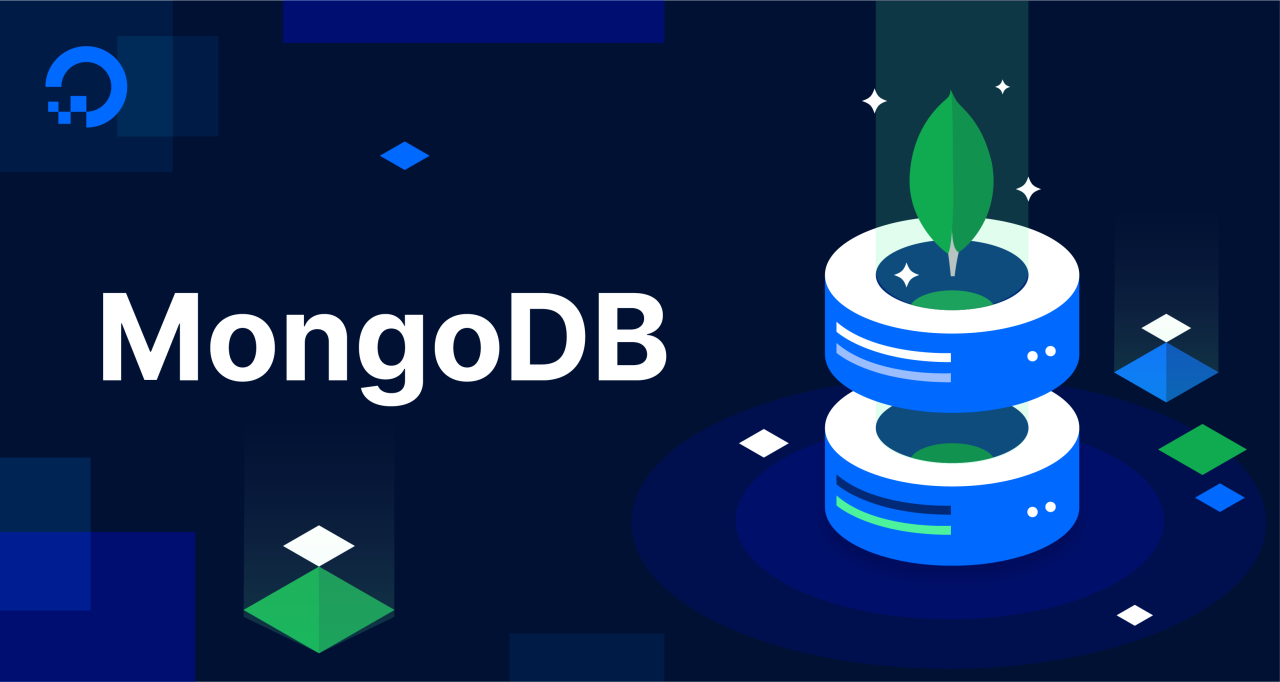MongoDB: A Comprehensive Guide to the Modern Database Solution
 Ahmed Raza
Ahmed Raza
In the world of modern applications, the demand for flexible, scalable, and high-performance data solutions is rapidly growing. MongoDB has become a go-to solution for many developers and organizations because of its dynamic document-based architecture and capacity to handle diverse data types and structures efficiently. In this article, we'll dive into the fundamentals of MongoDB, its key features, and why it has become so popular in modern application development.
What is MongoDB?
MongoDB is a NoSQL database that diverges from the traditional relational database model in favor of a more flexible, document-based structure. Unlike SQL databases that store data in tables, MongoDB stores information in documents (akin to JSON objects), which makes it highly adaptable to the varying needs of modern applications. This document-oriented approach enables MongoDB to handle unstructured and semi-structured data with ease, making it a top choice for handling big data, web applications, IoT, and other modern data needs.
MongoDB was initially released in 2009 by 10gen, which later rebranded itself as MongoDB, Inc. Today, it has evolved into a powerful data solution used by companies of all sizes, from tech giants like Google and Facebook to small startups.
Key Features of MongoDB
MongoDB's popularity is rooted in a range of powerful features tailored to the demands of modern applications. Here are some of the most significant:
Document-Oriented Structure: In MongoDB, data is stored in documents (BSON format, which is a binary version of JSON). Each document is a collection of key-value pairs, allowing for flexible schemas and faster access. This structure allows MongoDB to handle complex data types without requiring rigid table structures, as relational databases do.
Schema Flexibility: MongoDB’s schema-less nature makes it adaptable to changes, allowing documents within the same collection to have different structures. This flexibility is particularly advantageous in agile development environments where application needs evolve rapidly.
Scalability: MongoDB is designed to scale horizontally. It allows for easy data distribution across multiple servers through a process called sharding. As a result, it can handle increasing data volumes and user loads by simply adding more servers to a cluster, which makes it well-suited for applications expecting exponential growth.
High Performance: MongoDB offers high-speed read and write operations, making it suitable for high-traffic applications. Features like indexing, in-memory storage engines, and load balancing allow MongoDB to maintain excellent performance at scale.
Rich Query Language: MongoDB supports a powerful query language that includes support for geospatial queries, text search, and complex aggregations. Developers can perform queries, update documents, and manipulate data with greater precision and efficiency.
Replication and Data Availability: MongoDB provides replica sets, a form of data replication that maintains multiple copies of data across different nodes. This enhances data availability and ensures high durability, allowing applications to recover swiftly from hardware failures.
Why Choose MongoDB?
While there are many database options on the market, MongoDB’s architecture and features make it uniquely suited to specific applications and use cases. Here are some common scenarios where MongoDB stands out:
Big Data and Real-Time Analytics: MongoDB's ability to handle large, unstructured datasets makes it ideal for big data analytics and real-time data processing. Its document-based structure allows for rapid ingestion and querying, which is essential in analytics applications where data flow is continuous.
Content Management Systems (CMS): Content management systems require flexibility in storing varied content types like text, images, and metadata. MongoDB’s flexible schema makes it an excellent choice for CMSs that handle dynamic data.
Internet of Things (IoT): IoT applications generate large volumes of data from diverse sources and typically require a fast and reliable storage solution. MongoDB’s scalability and high-performance operations align well with the needs of IoT.
E-commerce: E-commerce platforms benefit from MongoDB’s capability to handle complex, hierarchical data structures. Product cataloging, inventory management, and personalized customer data all require a high degree of flexibility, which MongoDB offers.
MongoDB Components and Architecture
MongoDB's architecture is designed with scalability and flexibility in mind, enabling developers to manage and interact with data seamlessly. Key components of MongoDB’s architecture include:
Collections: Collections are analogous to tables in relational databases, but unlike tables, they don’t enforce a specific schema. Collections group documents that share a common purpose, allowing MongoDB to store related information together.
Documents: Documents are BSON (Binary JSON) objects that contain data as key-value pairs. Each document is unique and can store rich, complex data structures.
Replica Sets: A replica set consists of multiple copies of the same data, providing redundancy and high availability. One node in the replica set is the primary node, handling all write operations, while secondary nodes replicate the data from the primary and can serve read operations, which enhances scalability.
Sharding: Sharding is MongoDB’s horizontal scaling mechanism. It divides large datasets across multiple servers, or shards, to manage the demands of large-scale applications. Sharding allows MongoDB to store and process petabytes of data efficiently.
MongoDB Use Cases: Real-World Applications
MongoDB has found applications across various sectors due to its flexible and powerful design. Here are a few notable examples:
Healthcare: MongoDB can handle complex, hierarchical data structures, making it suitable for patient data, medical records, and even genomic data analysis.
Finance: MongoDB is used for real-time fraud detection, personalized financial services, and handling transactional data for financial institutions.
Social Media: Social media platforms leverage MongoDB for user profile storage, dynamic content feeds, and handling large volumes of interactions efficiently.
Gaming: MongoDB supports dynamic content updates, user profiles, and real-time analytics in online gaming, providing a scalable solution for millions of users.
Getting Started with MongoDB
If you’re interested in exploring MongoDB, here are a few steps to get you started:
Installation: MongoDB is available for various operating systems. You can download the community version for free from the MongoDB website and follow the instructions to set up your MongoDB server.
Creating Your First Database: Once installed, you can interact with MongoDB via the MongoDB Shell or connect to it using a MongoDB driver in your preferred programming language, such as Python, JavaScript, or Java.
Data Modeling: Before you start building your application, spend some time designing a schema that suits your data. MongoDB’s flexible schema can store various data types, so plan your documents accordingly.
Exploring Aggregation Framework: MongoDB’s aggregation framework is a powerful tool for data analysis, offering tools to group, filter, and transform data within the database. Mastering the aggregation framework is key to harnessing MongoDB’s full potential.
The Future of MongoDB
As organizations increasingly adopt cloud infrastructure, MongoDB has expanded its reach with MongoDB Atlas, a fully managed database as a service (DBaaS). MongoDB Atlas allows organizations to deploy, operate, and scale MongoDB clusters across multiple cloud providers with ease. Additionally, MongoDB’s continuous improvements in security, compliance, and integration capabilities make it an attractive solution for enterprise-grade applications.
Conclusion
MongoDB has revolutionized data storage by breaking free from the rigid schemas of traditional relational databases. Its document-based structure, scalability, and performance make it an essential tool for developers and companies aiming to build dynamic and data-driven applications. As the data landscape continues to evolve, MongoDB is poised to remain a key player in the world of databases, bridging the gap between flexibility and scalability.
Whether you’re building a content management system, handling big data analytics, or developing an IoT application, MongoDB offers a compelling solution for your data needs.
Subscribe to my newsletter
Read articles from Ahmed Raza directly inside your inbox. Subscribe to the newsletter, and don't miss out.
Written by

Ahmed Raza
Ahmed Raza
Ahmed Raza is a versatile full-stack developer with extensive experience in building APIs through both REST and GraphQL. Skilled in Golang, he uses gqlgen to create optimized GraphQL APIs, alongside Redis for effective caching and data management. Ahmed is proficient in a wide range of technologies, including YAML, SQL, and MongoDB for data handling, as well as JavaScript, HTML, and CSS for front-end development. His technical toolkit also includes Node.js, React, Java, C, and C++, enabling him to develop comprehensive, scalable applications. Ahmed's well-rounded expertise allows him to craft high-performance solutions that address diverse and complex application needs.